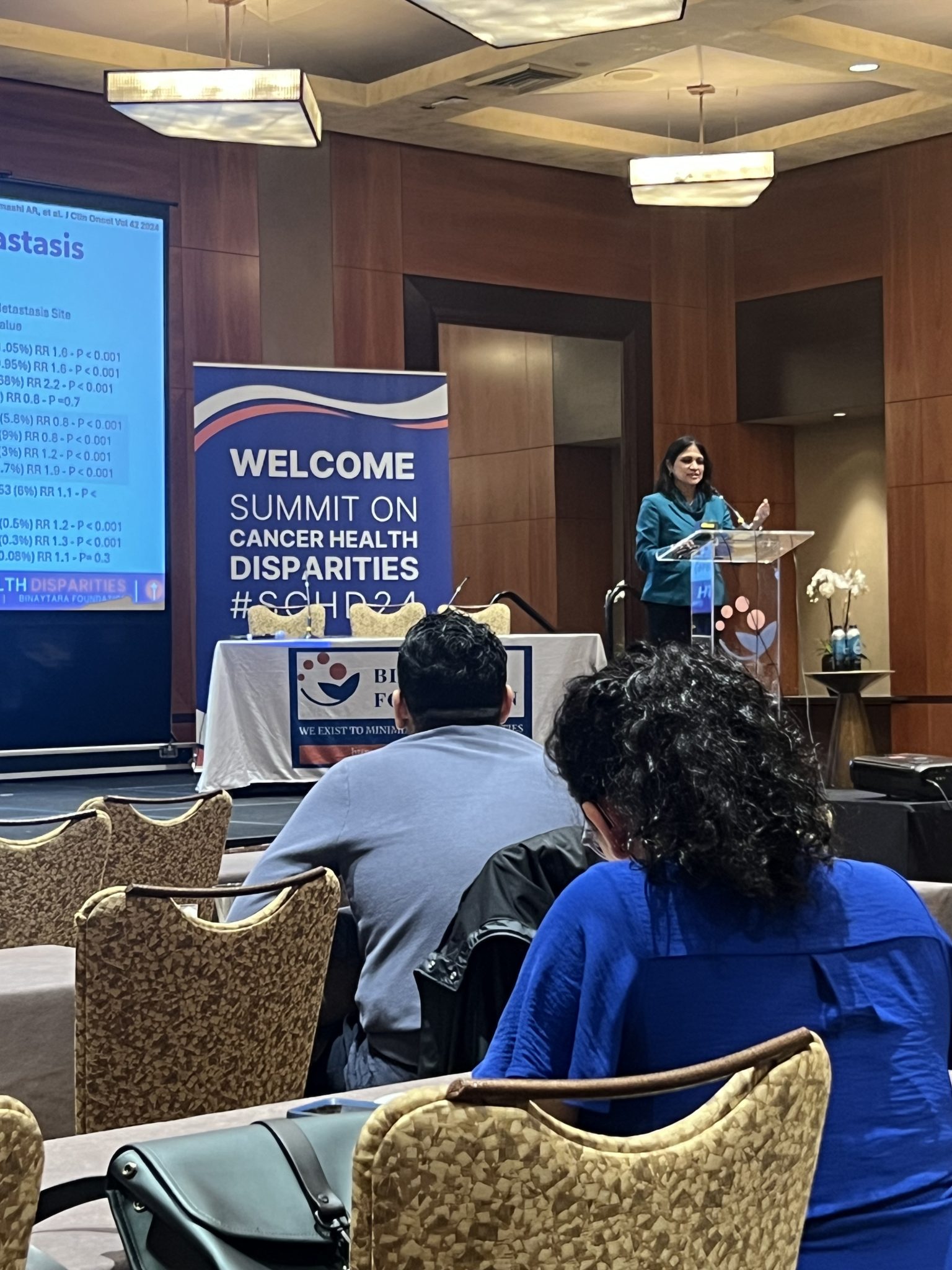By: Dr. Srinivas Tantravahi
At the Summit on Cancer Health Disparities held in Seattle from April 26-28, Dr. Ulka Vaishampayan, shed light on the existing disparities in genitourinary (GU) cancers.
Dr. Vaishampayan shared insights from her own observations and the results of studies she conducted. She highlighted significant age-adjusted disparities in prostate cancer (PC) incidence and mortality, with black individuals experiencing substantially higher rates compared to other racial groups. Moreover, Dr. Vaishampayan discussed disparities in the patterns of metastasis across all GU cancers, particularly emphasizing higher rates of liver metastasis in black patients with bladder cancer and brain metastasis with kidney cancer when compared to whites. These differences are often associated with poor prognosis. Her observations revealed disparities among black patients, notably a higher progression rate on hormone therapy within the first six months.
She stressed the critical importance of adequate representation of all races in GU cancer research. Early intensification with the addition of docetaxel or androgen receptor axis targeted agent to the backbone of an androgen deprivation therapy demonstrated improved efficacy in patients with metastatic prostate cancer. However, these studies enrolled populations that are predominantly white. To address these disparities in cancer research, Dr. Vaishampayan conducted a prospective clinical trial which required at least 30% enrollment of Black patients. The findings of this randomized clinical trial comparing enzalutamide with bicalutamide suggest that enzalutamide is associated with improved outcomes compared with bicalutamide, in terms of the rate and duration of PSA response, in Black patients with metastatic hormone– sensitive prostate cancer.
Dr. Vaishampayan further delved into the disparities in outcomes among patients with metastatic renal cell cancer receiving immune checkpoint inhibitors. Notably, she highlighted that Latinx patients experienced significantly shorter progression-free survival compared to non-Latinx patients. This observation underscores the imperative for additional research to elucidate the socioeconomic and biological factors contributing to these disparities.
Dr. Vaishampayan also highlighted research initiatives like the American Association for Cancer Research project Genomics, Evidence, Neoplasia, Information, Exchange (GENIE), which are beginning to provide more information about specific genetic alternation in cancer cells in all populations, which will allow us to develop and implement precision medicine for everyone. She concluded her talk by discussing the results of a study that examined gender disparities in GU oncology academic publishing over the last three decades. This study concluded that there is a significant underrepresentation of women in academic GU oncology, emphasizing the pivotal role of women’s leadership and mentorship to overcome this disparity.
In conclusion, Dr. Vaishampayan underscored the existence of barriers to care in addressing disparities in GU cancers, advocating for increased research efforts and improved representation of diverse patient populations.





